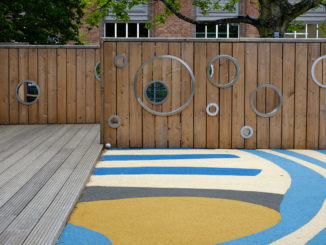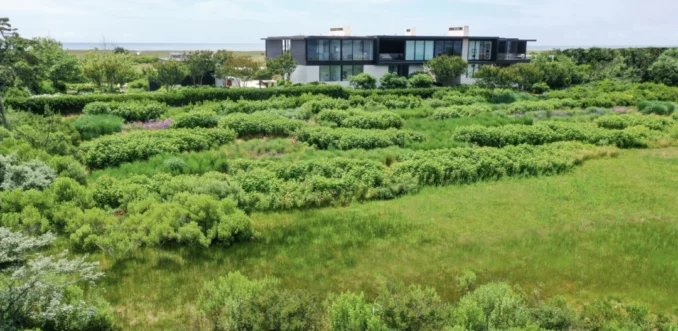
Dune Meadow is an example of a new development opening the door for the substantial improvement and restoration of long-neglected, natural ecosystems. Although initially seen as inherent challenges to the project, the environmental issues were re-defined by the Landscape Architect as opportunities to enhance the sustainability of the site and improve the project both visually and experientially.
The restoration framework of the dune system and wetland revegetation serves as a prototype for the natural progression and recovery of ecologically critical landscapes.
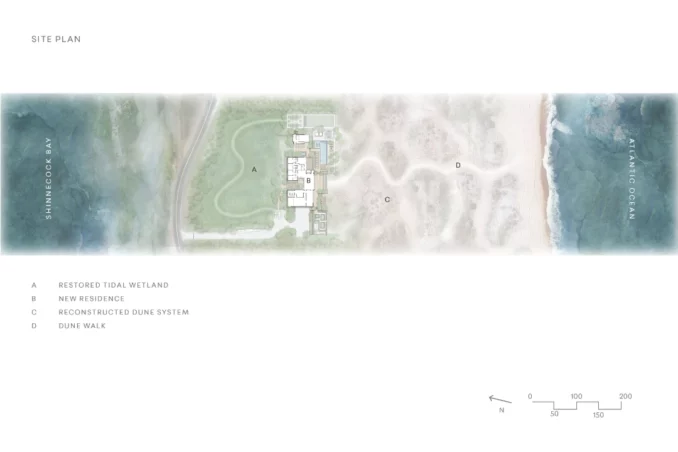
The original 5.5-acre oceanfront landscape was a tale of two ecologies. On the north side of the site was a one-acre freshwater wetland, overgrown with ornamental and invasive plants. To the south, were four acres of unstable dunes, degraded by severe coastal erosion due to decades of harsh ocean winds. Re-development of the site provided an opportunity to restore the property’s neglected ecosystems.
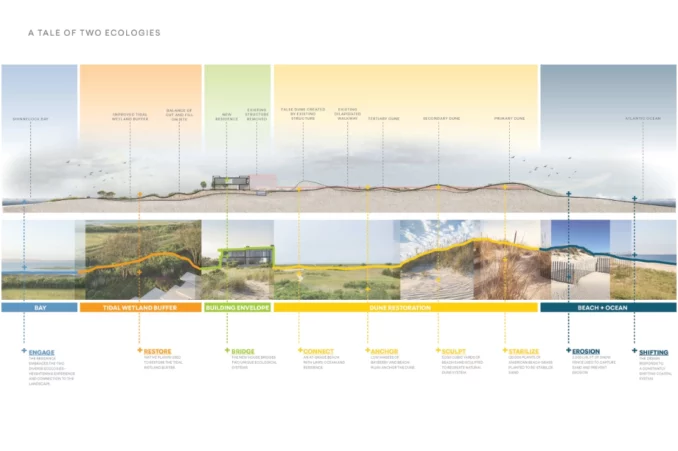
Based on initial site analysis, the landscape architect directed the form, layout, and elevations of the house, over-emphasizing the importance of settling the new home into its natural surroundings. FEMA drove the residence 12′ above the existing grade, protecting it from future storm events but creating a potential disconnect between the building and the landscape. To bridge the two elements, fill spoils from the house excavation were re-purposed around the home, physically protecting and connecting the building with its surrounding ecological context. Native plant species, harmonious with the freshwater wetland and coastal dunes, help to blend the site topography back together. Sliding stone walkways integrate with adjacent slopes and plantings to further marry the structure with the site. Outdoor spaces subtly terrace down to meet existing grades, avoiding large staircases. On the ocean-side of the residence, a low-slung vanishing edge pool knits into the beach grass and sand. A new dunescape was created by shaping 5,000 cubic yards of reclaimed beach sand into sinuous and undulating forms, restoring the natural dune system. The dilapidated wood walkway was replaced with a winding at-grade beach path, allowing free passage to local fauna, such as red-tailed fox and white-tailed deer. A sea of American Beachgrass was used to re-stabilize the sand, and low masses of native Beach Plum and Northern Bayberry provided a deeper root structure to strengthen the dune.
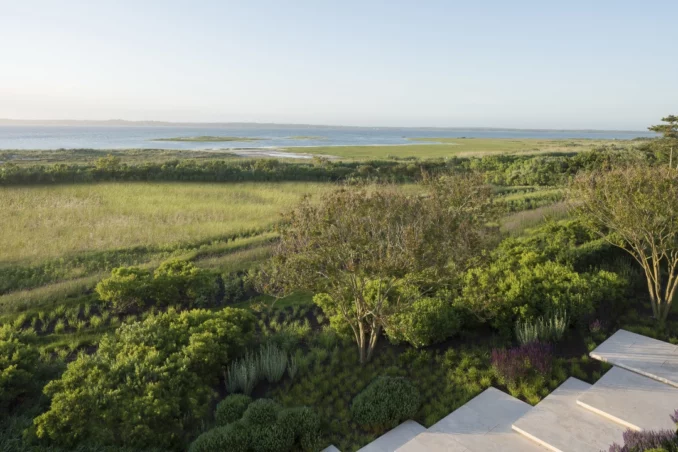
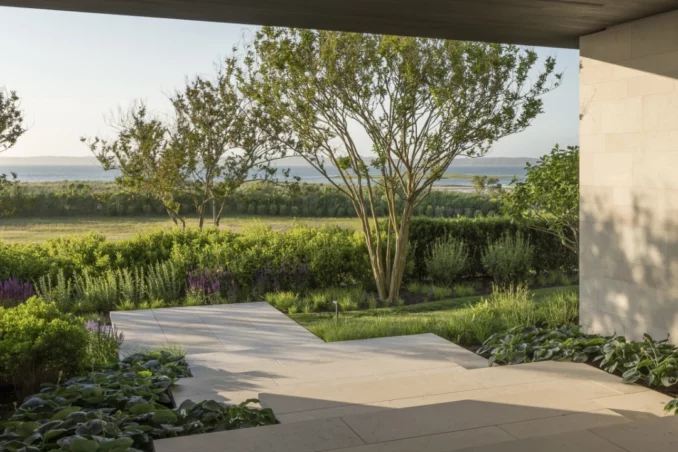
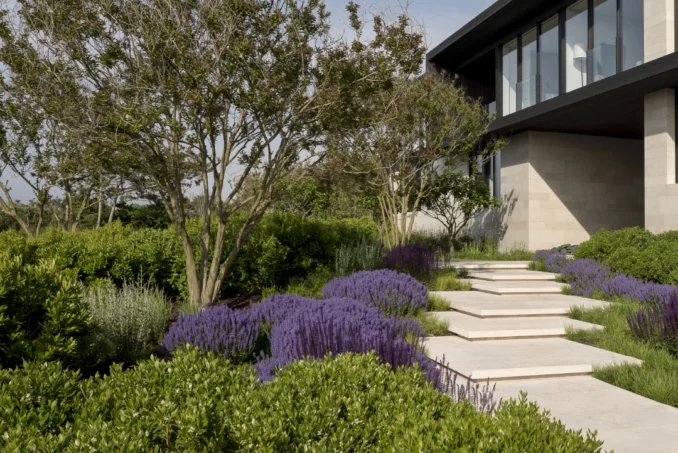
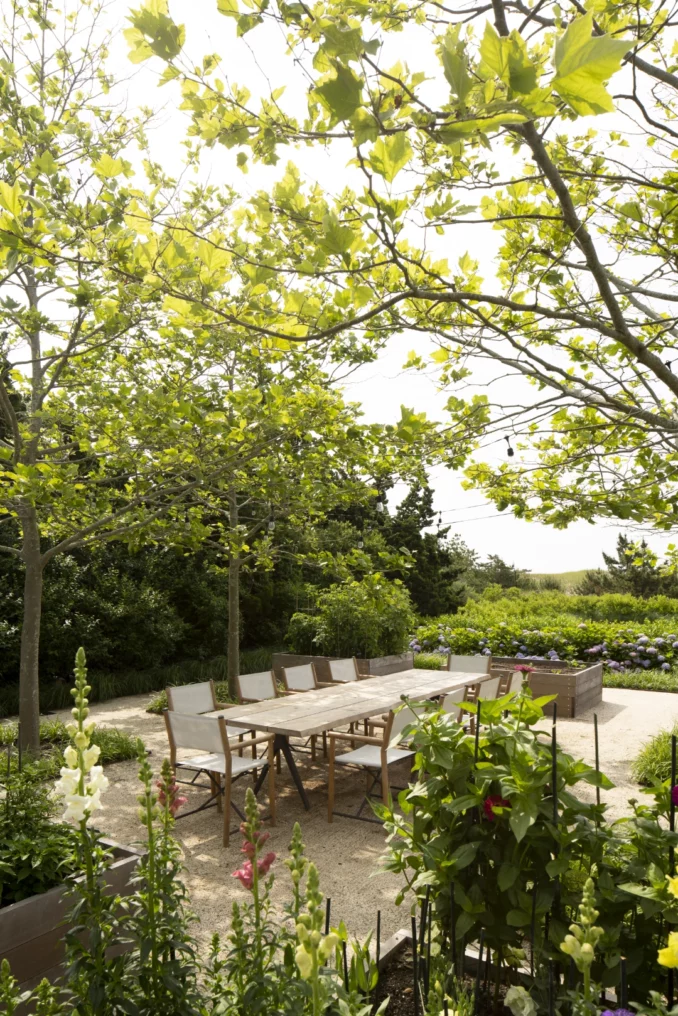
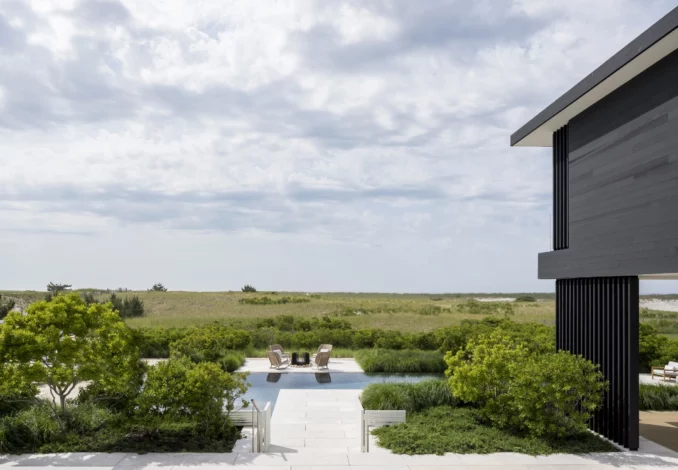
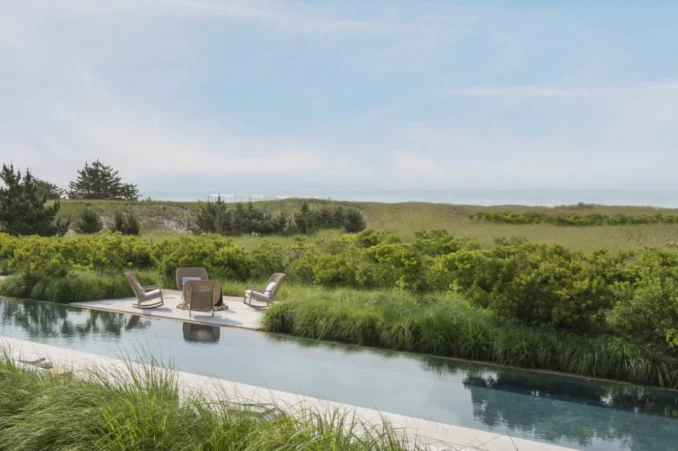
A similar restoration effort was implemented along the freshwater side of the property. Carefully preserving native plant communities and habitat, a pre-existing concrete driveway and retaining wall were carefully removed by hand and invasive plant species. In their place, a new diverse matrix of native wetland plants, including Winterberry, Groundsel bush, Switchgrass, and Spartina grass, nourished the wetland for years. A grass walking path invites guests to experience the native plants firsthand, heightening the landscape experience and expanding the use of the property.
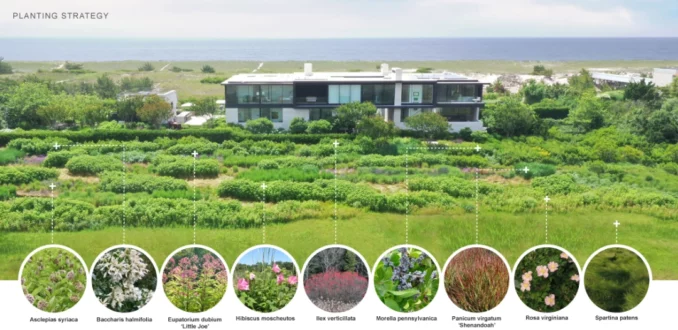
Despite the restrictive parameters accompanying the project, the Landscape Architect worked closely with the architect and homeowner to re-imagine environmental challenges as major site opportunities.
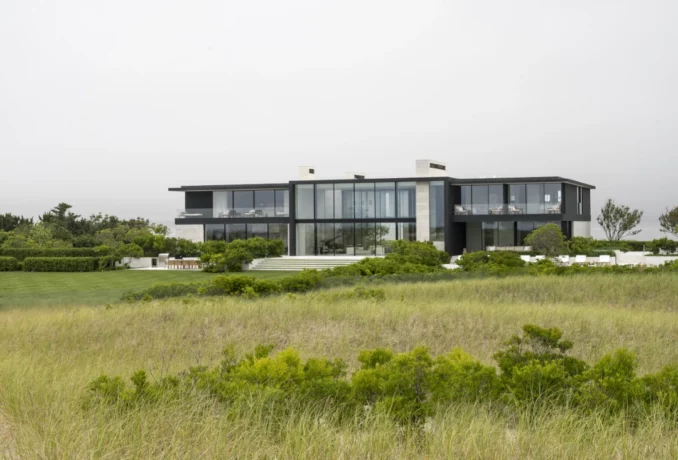
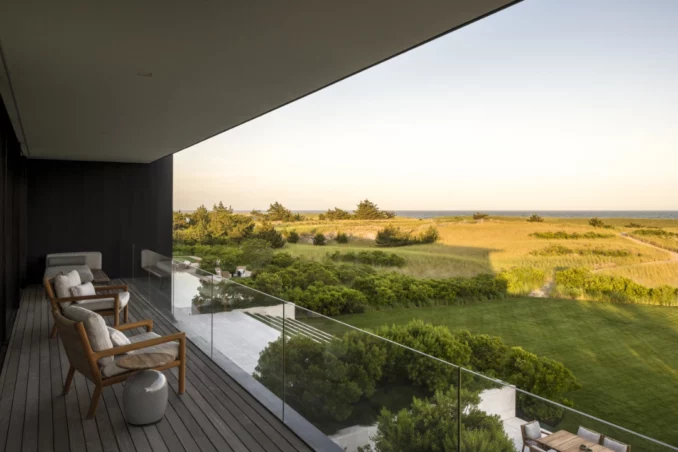
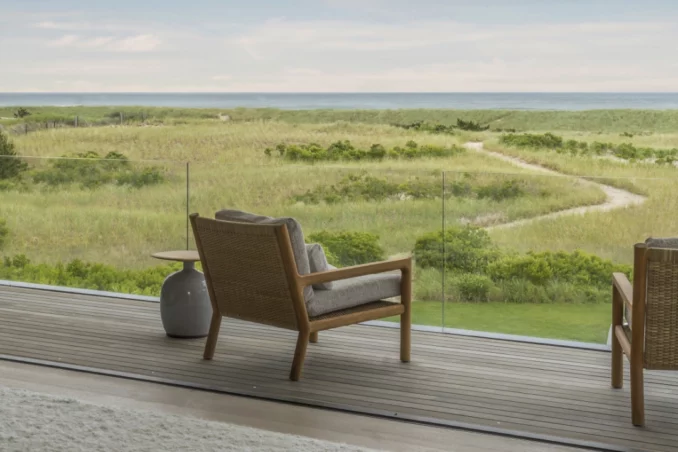
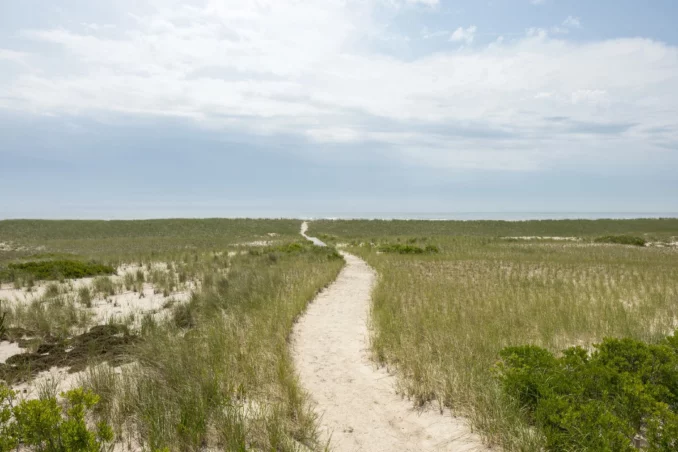
Dune Meadow
Landscape Architect: LaGuardia Design Group
Collaborators: Blaze Makoid Architects, Halliday Greer Interior Design, Loebs and Gordon Poolcraft, Whitmores Inc., Precision Stone Inc., First Coastal Corporation, Orsman Design, Inter-Science Research Associates
Image Credits: Michael Stavaridis- Images & LaGuardia Design Group- Diagrams/Plans


